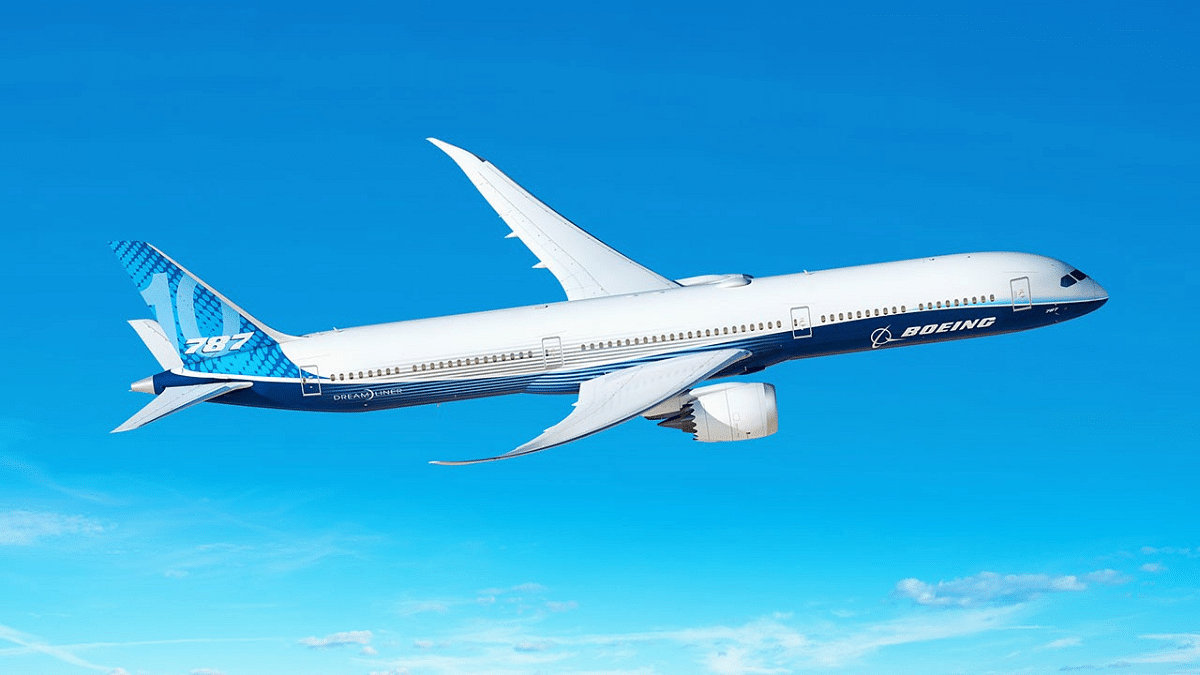New Delhi: An aerospace engineer working with Boeing for 30 years has said that the American multinational corporation took “manufacturing shortcuts” to produce 787 and 777 widebody planes, Seattle Times reported.
Employee Sam Salehpour alleged this was done to increase production rates and may have left “potentially serious structural flaws” on the widebody planes, the report said.
Salehpour said almost a thousand 787s and about 400 777s currently flying are at risk of premature fatigue damage and structural failure.
Fatigue damage pertains to metal airframes, which weaken due to frequent use.
He has accused the company of retaliating after he spoke up, saying he was “harassed by management, shut out of meetings and even threatened with physical violence by a supervisor”.
The engineer was then moved from the 787 programme to the 777 programme, where he “hoped there would be fewer problems”. Boeing, in 2021, had recommended airlines companies to halt operations of 777 planes.
Salehpour detailed his allegations to Mike Whitaker, the head of Federal Aviation Administration (FAA), which is the country’s civil aviation regulator under the US Department of Transportation. The agency is now investigating the matter.
Richard Blumenthal, an American lawyer and politician who is the senior US senator from Connecticut, will convene a senate hearing next week “to examine Boeing’s broken safety culture, focusing on firsthand accounts”, according to the report.
Salehpour, who came to the US from Iran to attend college in 1973, will speak at the hearing.
Boeing, on the other hand, has rebutted the claims and said they were “fully confident” in the structural integrity of the 787 Dreamliner and in the safety and durability of the 777 family, dismissing the claims as inaccurate.
About the Dreamliner, the aerospace major added that as a result of testing and analysis, it found that issues raised by Salehpour did not present any safety concerns and that the aircraft would maintain its service life over several decades.
The company said it would cooperate with Blumenthal’s committee by offering to provide the needed “documents, testimony and technical briefings”, according to the report.
Boeing says ‘gaps were fixed’
The allegations made by Salehpour pertain to flaws in the Dreamliner which were brought to the fore in 2020. They relate to “the tiny gaps at the joints of the fuselage sections” of the aircraft. At that time, these flaws were found by Boeing itself. This pushed the American multinational to halt deliveries for almost two years at a projected cost of $6.3 billion.
Two years later, the FAA allowed the resumption of 787 deliveries to airlines. It has become a norm for the FAA to inspect every 787 before issuing an Airworthiness Certificate.
Salehpour, however, said that the solution Boeing developed “hid” the problem instead of “fixing” it.
On the job at Boeing, Salehpour said he wrote reports “repeatedly” for his supervisors based on Boeing’s own data demonstrating the gaps in the 787 were not being properly measured. He said the gaps were present even after the 2020 delivery stoppage. According to him, the small filler pieces of material (shims) were not inserted.
The report said, “As the carbon composite fuselage skin, metal fasteners and joint fittings expand and contract with temperature changes during a flight, such unfilled gaps would theoretically allow the joined sections to move slightly relative to one another.” This can cause “excessive” wear and tear and cause premature failure of the structure.
The report quoted one of Salehpour’s lawyers, Lisa Banks, as saying that “shimming is a time-consuming process however. And, of course, time is money”.
Boeing, however, insists the gaps it fixed on the 787 airplanes at the time of the halt “never presented a near-term safety risk”.
Boeing has faced “rising public alarm over safety issues”, the report said.
In March, a pilot on an Australia to New Zealand flight told passengers that he had “temporarily lost control of his Boeing 787 after one of its instruments failed”. This caused a sudden plunge which “threw the travellers around the cabin, injuring dozens”. Boeing later advised airlines to inspect the “motorised cockpit seats the next time they perform maintenance on their 787s”.
(Edited by Tikli Basu)
Also read: Boeing whistleblower found dead days after testifying against aircraft giant over production issues

